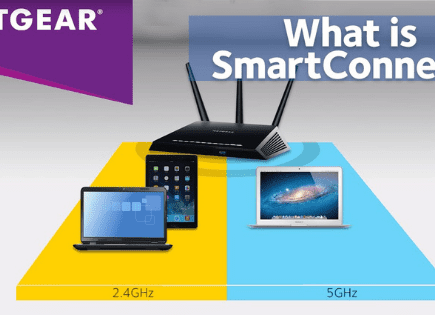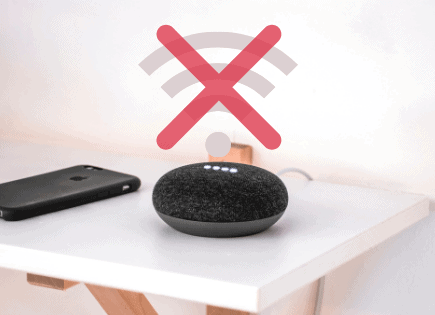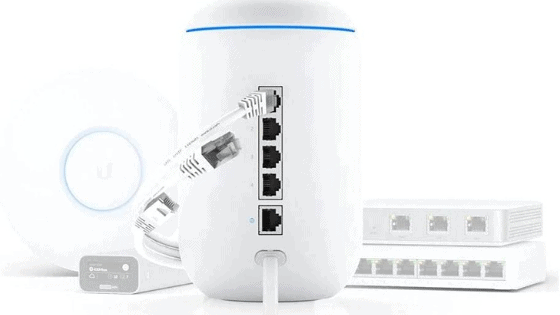
Best Router for Smart Home in 2023 and Beyond (Future-Proof!)
On average, the typical American home has 11 connected devices.
Now imagine what the average number of connected devices is for a “smart home”.
Take my small, 1150 square ft. smart home for example. It has 23 connected devices, more than double the average household.
In order to make sure all of these devices are performing at their best, and not interfering with each-other, you need a reliable, efficient, and fast WiFi signal.
And to get the best signal for your smart home, you need the best router.
Best router for smart home automation
The best routers for smart home automation in 2023 and beyond are:
- TP-Link Archer A9 Smart WiFi Router (Best budget smart home router)
- Amazon Eero Mesh WiFi Router (Best mid-range smart home router)
- NETGEAR Orbi Compact WiFi System (Best mid-to-high smart home router)
- Ubiquiti UniFi Dream Machine (Best high-end smart home router)
TP-Link Archer A9 | Amazon Eero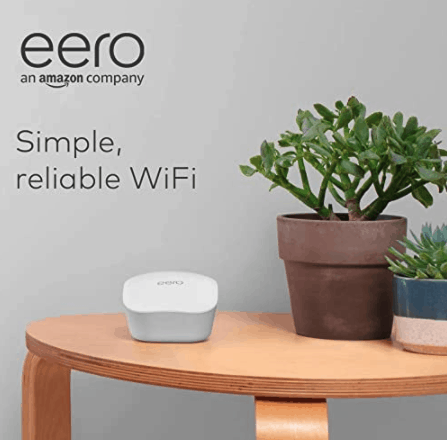 | NETGEAR Orbi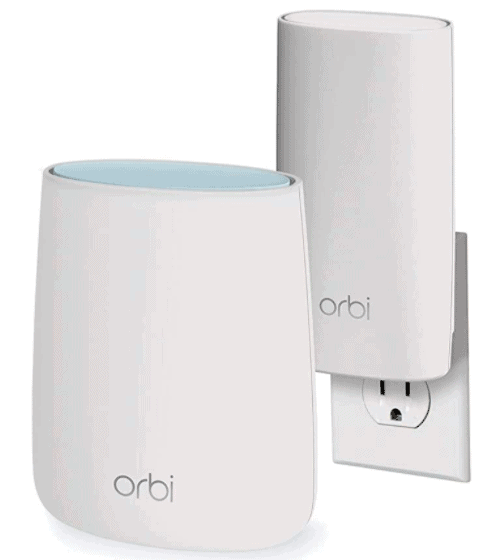 | UniFi Dream Machine | |
|---|---|---|---|---|
| Winner | Best budget | Best mid-range | Best mid-to-high | Best high-end |
| Cost | $ | $$ | $$$ | $$$$ |
| 802.11ac (MU-MIMO) | Yes | Yes | Yes | Yes |
| Dual band (2.4 & 5 GHz) | Yes | Yes | Tri-band! | Yes |
| Max Speed | 1900 Mbps | 1200 Mbps | 2200 Mbps | 2033 Mbps |
| Mesh | No | Yes | Yes | Yes |
| Integrations | Alexa | Alexa | Alexa & Google Assistant | None |
| Advanced Security | No | Yes | Yes | Yes |
| Price | Check Price on Amazon | Check Price on Amazon | Check Price on Amazon | Check Price on Amazon |
Must have router specifications
Before we get into a more in-depth review of each of these routers, let’s talk about what we need to look for in order to find the best router for our smart home.
When you’re looking to purchase a router for your smart home, performance and cost are obviously two major considerations.
We also want to future-proof our purchase as best we can so that our purchase will last at least the next five years (hopefully longer).
Ensuring your router meets the following, minimum requirements will give you the best chances of doing just that:
- 802.11ac wireless standard, Wave 2 or better
- Dual band radio (2.4 & 5.0 GHz) or better
- 1200 MBps or better
Fear not, all the smart home routers I recommended above meet these minimum specifications.
802.11ac wireless standard, Wave 2 (MU-MIMO)
802.11ac Wave 2 is just a wireless internet standard.
I know, the naming convention is terrible. Luckily in recent years they’ve started calling this “WiFi 5”, which is a lot easier to keep track of.
The key here is that 802.11ac Wave 2 enables something called MU-MIMO – or “Multi-User – Multiple Input, Multiple Output”.
MU-MIMO allows your router to maintain multiple connections with multiple devices at the same time. This is key to maximizing the available bandwidth you have!
Without this your top WiFi speed would be determined by the slowest device on your network. This is because earlier versions of 802.11 work on a “first-come, first serve basis”.
So when multiple devices or users begin accessing the router at, or near the same time, congestion is introduced as the first request is serviced, and the other requests “wait in line”.
MU-MIMO allows you to avoid this congestion altogether.
You can imagine how important this is the more devices you have connected to your network.
There is an even more recent version of 802.11 called 802.11ax, or WiFi 6. I’ll talk about this a bit later but for now just know that I don’t think it will be truly relevant for average consumers for several years at least.
Dual-band radio (2.4 & 5.0 GHz)
The good news is that almost all routers these days have dual-band radio signals.
This gives you the ability to connect devices in your home to two different networks (either the 2.4 GHz or 5.0 GHz network).
Having two separate networks allows for faster speeds and flexibility. The dual-bands avoid connection issues and interferences and provides more stability overall.
There are even routers out there that offer tri-band, or three separate network bands but unless you anticipate a ton of concurrent users on your network, I wouldn’t worry about it just yet.
1200 MBps speed
When you read router speeds what the number is really telling you is the combination of the speed offered by the 2.4 GHz band PLUS the speed of the 5.0 GHz band.
An advertised speed of 1200 MBps is actually just 350 MBps on the 2.4GHz band and 850 MBps on the 5.0 GHz band.
So in reality your top possible speed is really just 850 MBps (since the 5.0 GHz band offers the highest speeds).

Not to mention internet speeds vary wildly from home to home, environment to environment.
Depending on the internet speeds you pay for, the configuration of your room, the material used to build the home, etc. the internet speed for two people with the same router could be drastically different.
That said, we want to shoot for a minimum router speed rating of 1200 MBps.
At this speed we can do just about everything we want, will little to no interruptions.
Nice-to-have have router specifications
Some other, nice-to-have router specifications include the following (these are not necessary to get strong performance or to future proof your router purchase):
- Mesh WiFi
- A built-in security option
- Integration with smart speakers
Mesh WiFi
Mesh WiFi is great for larger homes (3000 sq ft+), or homes that tend to experience “dead” spots.
These networks have a router, connected to a modem (per usual), but they also allow you to add “satellites” around the house for additional WiFi coverage.
These satellites carry the WiFi signal further.
The more satellites you add, the stronger and better the coverage.
The drawback here is cost – the more satellites you add, the higher the price-tag since you need to buy more equipment.
That said, if you have a big home or your home is shaped oddly with multiple floors etc. you might want to consider making sure your router has mesh capabilities.
Security
A lot of routers now come with anti-virus and/or firewall protection, which is great.
But some go a step further and offer direct integrations with McAfee or Trend Micro.
These security services manage your whole home and provide additional peace of mind.
Again, not a requirement, but nice-to-have.
Smart speaker integration
For the smart home enthusiasts amongst us, this is a fun one.
More and more routers are starting to provide direct integrations with Google’s Home Assistant and Amazon’s Alexa.
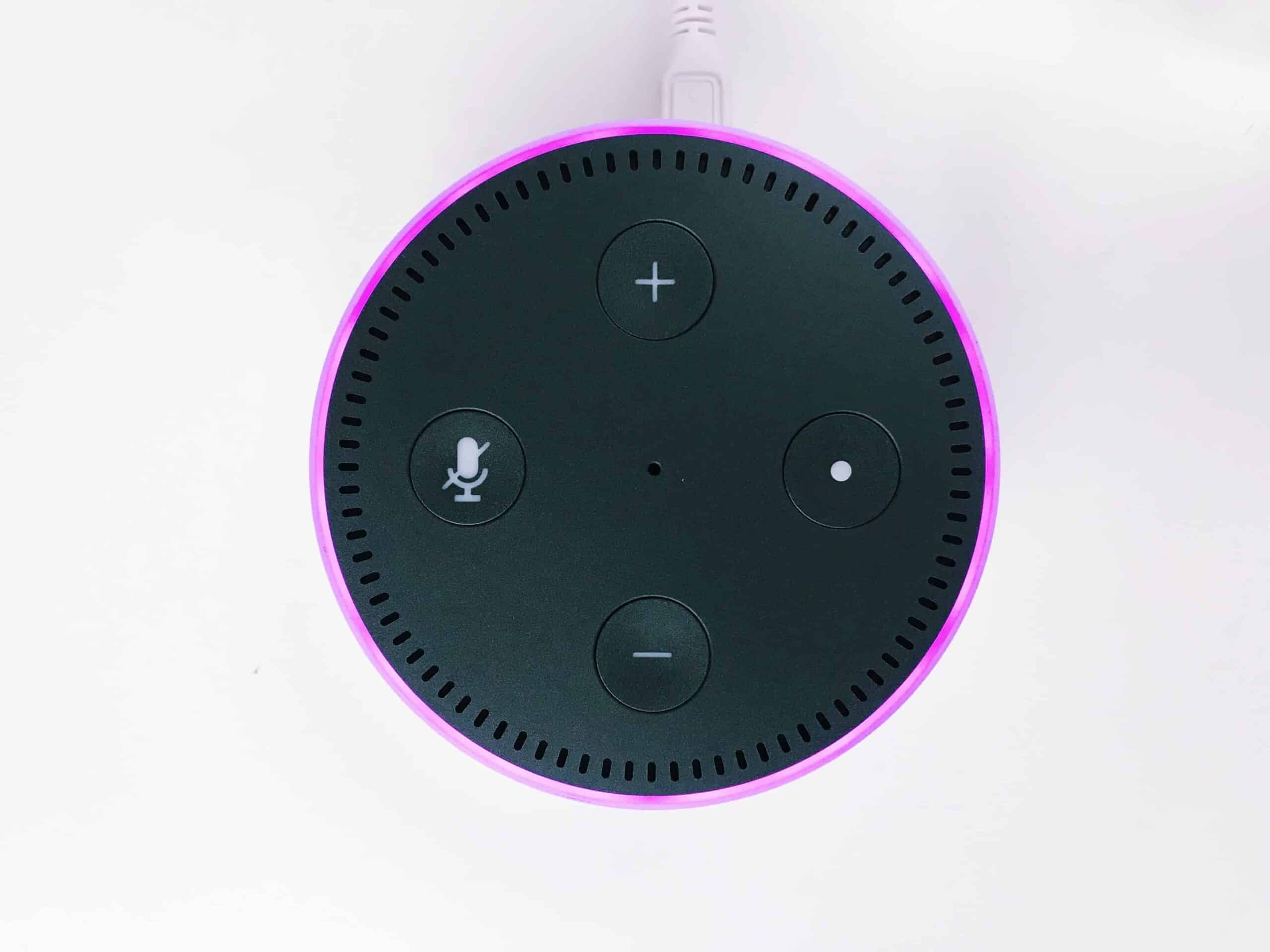
The neat thing about these integrations is it gives you the ability to voice control your WiFi network instead of having to remember and sign into a separate router interface.
For example, if you have a Guest network that you want a friend to be able to access, you can ask Alexa to “enable the Guest network”.
Or if you have multiple networks and you don’t want your kids to have access to the WiFi any longer you can say, “Alexa, disable kid’s WiFi access”.
You can even restart your router with a voice command.
Obviously this functionality is not a must-have but these integrations are pretty sweet.
New router specifications to know about
In the world of technology, improvements are made every day and routers are no different.
Some of the newest and most exciting updates include:
- WiFi 6 (802.11ax)
- Tri-band radio
- 802.15.4
WiFi 6 (802.11ax)
No doubt, WiFi 6 is the future of WiFi.
It allows wireless devices to be able to simultaneously upload or send data to the router or its access points.
So instead of dedicating the entire bandwidth to each device, one at a time, WiFi 6 can talk in real-time to multiple devices.

Routers have already begun incorporating WiFi 6 but as with most new technology, they tend to be on the expensive side.
If you’re a home owner and expect to be using your router for pretty normal use, I wouldn’t worry about getting a WiFi 6 router for some time.
This new protocol was really designed specifically for high-density public environments, such as train stations, stadiums and airports.
Tri-band radio
As a reminder, dual-band gives you the ability to connect devices in your home to two different networks (either the 2.4 GHz or 5.0 GHz network)
Tri-band just adds a third radio band to the mix. You can think about the third band as just a second 5.0 GHz network.
So with tri-band you have a 2.4 GHz network, and two 5.0 GHz networks: 5.0 GHz A and 5.0 GHz B.
The added benefit is the same as dual band, more devices can connect and operate to your WiFi without interrupting or interfering with one another.
Like WiFi 6, this new technology isn’t really all that necessary and unless you have a ridiculous amount of WiFi connected devices, you don’t need to worry about tri-band.
802.15.4
802.15.4 is just another wireless protocol. Actually it’s the protocol that ZigBee runs on.
If you’re not familiar with the main smart home protocols (Z-wave and ZigBee), you can check out my post on them here.
But the important piece here is that this protocol is currently baked into millions of smart home products.
Routers are slowly starting to incorporate the 802.15.4 language as the protocol continues to grow in popularity.
By having a protocol other than WiFi built into the router, your smart home devices won’t be competing for bandwidth on the 2.4 or 5.0 GHz bands.
Instead these smart products can connect and communicate directly through the 802.15.4 protocol.
This is definitely not a must have router spec yet but it’s one to be on the look out for in the coming years.
Ok, let’s get to the more in-depth smart home router reviews…
TP-Link Archer A9 – best budget
You may have heard of the old saying, “You buy cheap, you buy twice”.
That’s why you don’t see any truly inexpensive routers on my list. The reality is you have to spend some money to get the best.
That said, the router I think you can buy for the least amount of money and still get a great smart home router is the TP-Link Archer A9.
The TP-Link Archer A9 is a great all around value and is best suited for a small to medium size home (around 2500 sq ft).
Since it is the only router on my list that does not have mesh capabilities, you won’t be able to expand your network coverage with this device. Keep that in mind.

Pros:
- Easy to setup with an intuitive user interface
- Coverage for a moderately sized home is good
- Fast connection / High performance
- Stable
- Handles a lot of traffic well
Cons:
- Router itself is quite bulky (can’t be mounted on wall either)
- Not a mesh router – can’t extend the range
Amazon Eero – best mid-range
Eero really kick started the Mesh router renaissance and Amazon took notice when they acquired them in 2016.
The ability to place multiple satellite devices around your home in order to increase WiFi coverage is revolutionary and Eero is leading the way.
For just the stand alone Eero router you’ll spend about 100 bucks.
I have this listed as my best mid-range smart home router because odds are if you’re buying Eero, you’re buying an additional satellite or two as well (if you don’t need the extra coverage just stick with the TP Link Archer A9 above)

Pros:
- Easy-to-use app
- Reliable mesh connection
- Great design
Cons:
- Speed is good but not blazing fast
- Coverage for larger homes will be spotty
- Data privacy concerns with Amazon acquisition
NETGEAR Orbi – best mid-high range
The Orbi router is a flat out beast.
It’s almost twice the speed of the Eero, but you get what you pay for at almost double the cost.
It has tri-band technology, meaning you have three separate networks to connect to. This is great if you’re a gamer, for example. You can dedicate an entire network to just gaming.
That way you won’t deal with any lag etc. from additional congestion on your network.
If you do setup multiple Orbi mesh satellites, Orbi will automatically connect you to the best network based on the closest one to you, as you move around your house.
They even make a weatherproof outdoor satellite so you can extend your WiFi out into your yard and not have to worry about the rain or snow.

Pros:
- Very nice design
- A lot of advanced system settings
- Strong, stable, performant signal (tri-band!)
- Fast!
- Wide ranging coverage
- Parental controls through the app
Cons:
- Setup can be a pain – ignore instructions and just use YouTube
UniFi Dream Machine – best high-end
If you’ve got the dough and a medium to large home, look no further than the Dream Machine.
Ubiquity makes this router and they have quite the reputation for creating amazing products.
Historically it required 4 separate devices to get the punch that the Dream Machine currently punches.
Ubiquity spent a lot of time designing this router and it shows.
Ultimately it’s UniFi that sets this baby apart from just about every other router on the market.
What’s UniFi you ask?
It would take me awhile to cover this in detail but in short, UniFi is a wireless network management software that comes free with the Dream Machine.
It allows you to manage multiple wireless networks using a web browser and the feature-set it enables is impressive. Here are some of the highlights:
- Multiple wireless networks – It’s like having two separate routers. You can use this to put all your smart home devices on one network and then connect your computer, smart phone, etc. to the other network.
- DPI – Deep packet inspection. This allows you to see what every-single device on your network is doing in real time. For example, it will literally show the website you’re browsing that moment.
- QOS – Quality of service. The Dream Machine automatically does a speed test during set up to evaluate the top speed available to it. This way it can make sure no single device or devices bog down your network.
- Additional access points – if you’ve got a big house and you need to get more WiFi coverage all you need to do is add a Ubiquity access point and you’re in business.

Pros:
- Simple design
- Highly configurable
- Built in security gateway
- Easy, intuitive setup
- Great speed
- UniFi wireless network management software
- Enterprise system packed into a small router
Cons:
- Requires an account with UniFi (I’m reaching here…)
Conclusion
The best smart home routers will meet the following minimum specifications: they’ll run the 802.11ac wireless standard (WiFi 5) or better, have Dual band radio (2.4 & 5.0 GHz) or better and have a speed of 1200 MBps or better.
Routers with mesh WiFi, additional built in security options, and integrations with smart speakers (like Google Assistant or Alexa) can be nice, but aren’t necessary.
In the future routers that run on WiFi 6, have tri-band and offer the ZigBee 802.15.4 protocol will become more prevalent. But we’re are at least 5-10 years away from these features being worth the additional cost.
TP-Link Archer A9 | Amazon Eero | NETGEAR Orbi | UniFi Dream Machine | |
|---|---|---|---|---|
| Winner | Best budget | Best mid-range | Best mid-to-high | Best high-end |
| Cost | $ | $$ | $$$ | $$$$ |
| 802.11ac (MU-MIMO) | Yes | Yes | Yes | Yes |
| Dual band (2.4 & 5 GHz) | Yes | Yes | Tri-band! | Yes |
| Max Speed | 1900 Mbps | 1200 Mbps | 2200 Mbps | 2033 Mbps |
| Mesh | No | Yes | Yes | Yes |
| Integrations | Alexa | Alexa | Alexa & Google Assistant | None |
| Advanced Security | No | Yes | Yes | Yes |
| Price | Check Price on Amazon | Check Price on Amazon | Check Price on Amazon | Check Price on Amazon |

